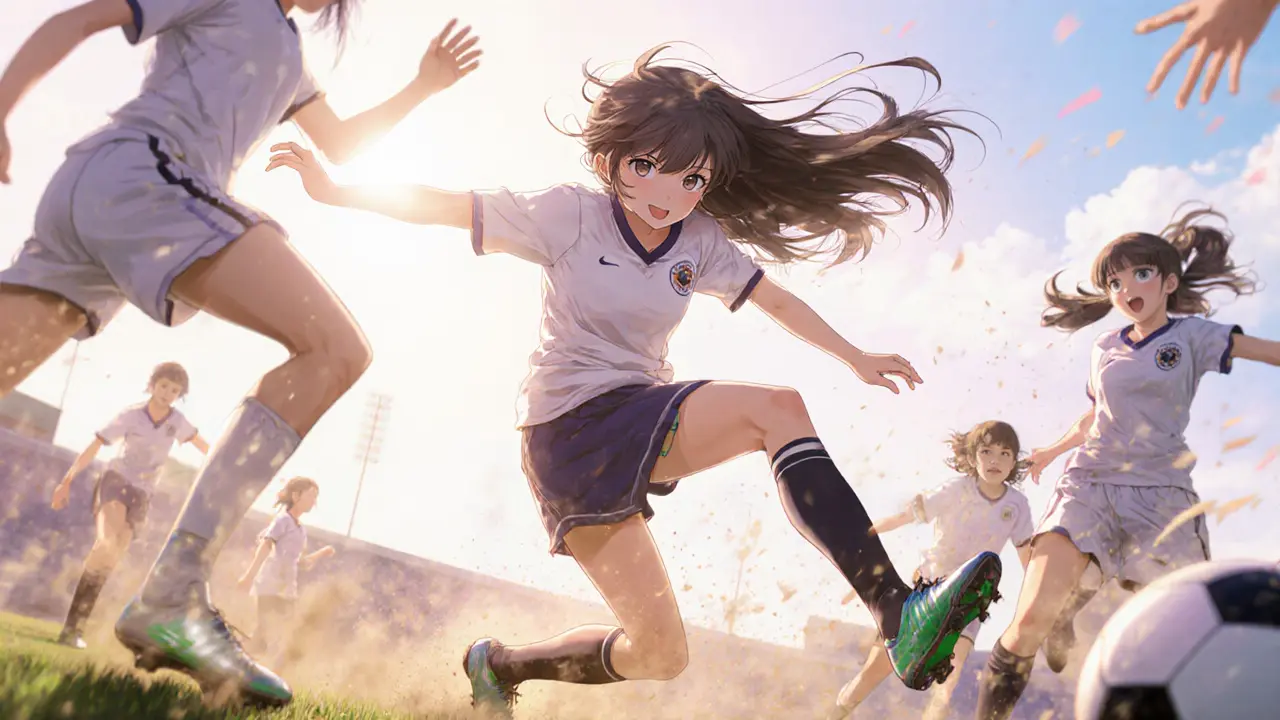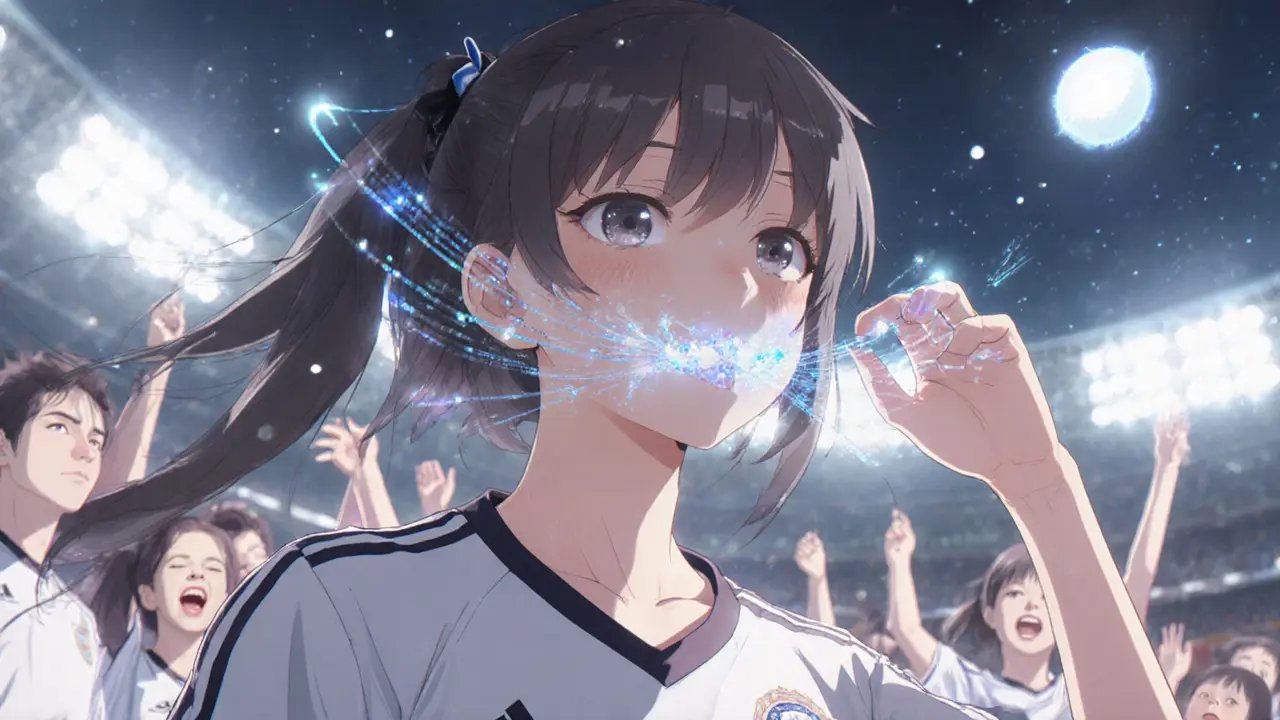What Are Contact Sports? Rules, Risks, and Real Benefits

When you watch a rugby scrum collapse or see two soccer players collide for a header, you’re seeing contact sports in action. These aren’t just games where people bump into each other by accident-they’re structured, rule-bound activities where physical contact is part of the game. And while some parents worry about injuries, the real story is more complex: contact sports build toughness, improve bone strength, and teach emotional control under pressure.
What Exactly Counts as a Contact Sport?
Not all sports with physical interaction are the same. The International Council of Sport Science and Physical Education (ICSSPE) classifies contact sports into three clear types:
- Full-contact sports: Intentional, forceful collisions are central to winning. Think rugby, American football, ice hockey, and MMA. Tackles, blocks, and checks aren’t just allowed-they’re required.
- Limited-contact sports: Contact happens, but it’s not the goal. Soccer, basketball, and volleyball fall here. Shoulder bumps, incidental collisions, and contested aerial duels are part of play, but deliberate hits are fouls.
- Non-contact sports: Physical interaction is banned. Tennis, swimming, track, and cycling are examples. Even brushing shoulders is considered interference.
Surprisingly, soccer-played by over 265 million people worldwide-is classified as a limited-contact sport. Yet biomechanical studies show the average player experiences 12-18 physical interactions during a single 90-minute match. These aren’t gentle taps. Legal tackles generate forces of 4.2 kilonewtons (kN), equivalent to dropping a small car from waist height onto your leg.
The Real Injury Risk-And Why It’s Not What You Think
People hear "contact sport" and immediately think of concussions and broken bones. And yes, the numbers are real. American football leads with 35.9 injuries per 1,000 athlete exposures, followed by rugby at 27.8. Soccer comes in at 19.1. But here’s what most don’t realize: the majority of injuries in contact sports come from poor technique, not the sport itself.
A study in the British Journal of Sports Medicine found that 68% of contact-related injuries in youth soccer were caused by improper tackling form-like leading with the head or making contact above the sternum. Another 42% happened during unsupervised play. That’s not the fault of soccer. It’s the fault of skipping foundational training.
Compare that to non-contact sports: while they have lower injury rates overall, they don’t prepare you for real-world physical challenges. A 2020 study in the American Journal of Sports Medicine found kids in contact sports were 4.7 times more likely to suffer acute injuries-but also 3 times more likely to develop better spatial awareness, balance, and reaction speed.
Hidden Benefits: Stronger Bones, Faster Reflexes, and Mental Toughness
Let’s talk about what contact sports do for your body that other sports can’t.
Bone density: Soccer players have 5-8% higher bone mineral density in their kicking legs than non-athletes. That’s because repeated, controlled impacts stimulate bone growth. A 2021 study in Osteoporosis International showed soccer players had 12-18% greater bone density in their lower limbs than swimmers of the same age and training volume.
Neuromuscular reaction time: Contact athletes react 23% faster to unexpected pushes or falls. This isn’t just useful on the field-it helps prevent real-life falls as you age. A 2022 study found elite soccer players could stabilize themselves after a sudden shove in just 0.28 seconds. Non-contact athletes took 0.36 seconds.
Emotional regulation: Brazilian national team players studied by JJ Fechio in 2022 scored 32% higher on the Sport Anxiety Scale. Why? Because they learned to stay calm under physical pressure. That skill translates to school, work, and relationships. One parent on Reddit wrote: "My son used to cry after every tackle. Now he stands up, checks himself, and gets back in. That confidence spilled over into his math class."

How to Train Safely-From Age 6 to Pro
You don’t just throw a 10-year-old into a full-contact drill and hope for the best. Proper progression matters.
- Ages 6-10: Focus on falling safely. Learn how to roll, distribute impact, and avoid panic reactions. No intentional contact allowed in most youth leagues.
- Ages 11-13: Introduce shoulder-to-shoulder challenges and tactical fouls. Teach body positioning. This is when most injuries occur if skipped.
- Ages 14+: Full contact techniques. Tackling, blocking, and aerial duels. Requires 18-24 months of supervised training before full game play, according to USSoccer’s Player Development Curriculum.
Coaches who skip these steps are setting kids up for injury. A 12-week pre-season contact conditioning program at the University of Florida reduced injuries by 35% in high school athletes. That’s not magic-it’s preparation.
Equipment That Actually Works
Shinguards aren’t optional. FIFA mandates they meet ISO 14464-1:2019 standards: minimum 20mm thickness and 150J impact resistance. But not all gear is created equal. Amazon reviews of soccer shinguards show 34% of negative feedback cites "inadequate protection for high school-level play." Why? Because some brands cut corners.
For full-contact sports, helmets must meet NOCSAE ND002-19m21 standards with a 3-star safety rating. In rugby, mouthguards are now being upgraded with sensors-like Bite Tech’s SmartGuard-that monitor impact forces with 94% accuracy. These aren’t toys. They’re data tools.
Even the ball is getting smarter. Adidas’ SMART BALL, now used in 78% of European academies, contains sensors that measure impact force during headers and tackles. Coaches use the data to adjust training loads and spot risky patterns before injuries happen.

What’s Changing-And Why
Rules are evolving. FIFA banned intentional heading for players under 12 in 2021. Germany, Sweden, Norway, and Scotland followed. The NFL cracked down on helmet-to-helmet hits in 2023, reducing those incidents by 28% in one season.
Concussion substitutes are now mandatory in all FIFA competitions. If a player shows signs of a head injury, teams can make an extra substitution without penalty. That’s huge. It removes the pressure to play through pain.
And the science is catching up. A 2023 study in the New England Journal of Medicine found that soccer players who did 10 minutes of neck strengthening daily reduced their concussion risk by 42%. Simple. Cheap. Effective.
Is It Worth It?
Parents ask: "Should my child play contact sports?" The answer isn’t yes or no. It’s: "Are you willing to do it right?"
Coaches must be certified in contact safety. Kids need proper progression. Equipment must be certified. And most of all-the culture must prioritize safety over toughness.
When done right, contact sports give kids something no video game or treadmill can: real resilience. They learn to handle pain, read space, trust teammates, and recover from setbacks. They learn how to fall-and how to get back up.
That’s not just sport. That’s life training.
Are contact sports safe for kids?
Yes, when supervised properly. Injury rates drop by 35% with structured training, certified coaches, and age-appropriate progression. The biggest risks come from skipping foundational skills like falling safely and learning proper tackling form. Youth leagues that enforce these rules see far fewer serious injuries.
What’s the most dangerous contact sport?
American football has the highest injury rate at 35.9 per 1,000 athlete exposures, followed closely by rugby at 27.8. But soccer, despite being "limited-contact," causes the most total injuries globally because it’s played by so many more people. The nature of injuries differs: football has more head and spinal trauma; soccer has more knee and ankle sprains from collisions.
Can contact sports improve mental health?
Absolutely. Studies show athletes in contact sports develop better emotional regulation under pressure. Brazilian national team players scored 32% higher on anxiety resilience tests. The physical challenge teaches kids to stay calm when things get rough-on the field and off. Many parents report improved confidence, focus, and stress management in their children after joining contact sports.
Do shinguards really prevent injuries?
Yes-if they’re certified. FIFA requires shinguards to meet ISO 14464-1:2019 standards: 20mm thickness and 150J impact resistance. Cheap, thin guards may look good but offer little protection. In 17% of lower leg injuries, the shinguard was displaced or failed. Always buy gear with certification labels and replace it if it cracks or bends.
Why is soccer considered a contact sport if you can’t tackle like in rugby?
Soccer is classified as a limited-contact sport because physical interaction is incidental, not the goal. But players regularly collide-shoulder-to-shoulder challenges, aerial duels, slide tackles. Biomechanical studies show 12-18 physical contacts per player per match. These aren’t accidents; they’re tactical. The rules allow controlled contact, making it fundamentally different from non-contact sports like tennis or swimming.
Are there long-term health risks from playing contact sports?
Repetitive head impacts can carry risks, especially in full-contact sports. But research shows the greatest danger comes from poor technique and lack of medical oversight. In soccer, 78% of concussions result from player-to-player contact-not the ball. That’s why FIFA now limits heading in youth play and requires concussion substitutes. With proper rules, monitoring, and neck-strengthening exercises, long-term risks can be managed effectively.





Paul Kotze
October 29, 2025 AT 17:44Really solid breakdown on contact sports. I’ve coached youth soccer for 8 years and the biggest shift I’ve seen is how much better kids are at falling now. We spend the first 6 weeks just teaching rolls and impact distribution. No tackling until they can safely drop and get up without flailing. It’s boring, but it cuts injuries by half.
Jason Roland
October 30, 2025 AT 05:13Man, I used to think contact sports were just glorified brawls. Then my nephew started playing flag football and moved to full tackle at 13 after a full year of technique drills. He’s calmer, more aware, and actually better at avoiding collisions now-even outside sports. This isn’t about toughness, it’s about control.
Niki Burandt
October 30, 2025 AT 12:51Ugh. I just can’t with this. 😒 Kids are getting concussions from soccer headers. They’re not ‘building resilience’-they’re getting brain damage. And you’re acting like it’s fine because ‘it’s controlled.’ Control? My cousin had a seizure after a header at 11. No one talked about that. 🤦♀️
Chris Pratt
October 31, 2025 AT 12:13As someone who grew up in a country where football is religion but safety is an afterthought, I’ve seen both sides. The U.S. has better equipment standards, but Africa and Asia are catching up fast. In India, kids play barefoot on concrete with no shinguards. We need global standards-not just for gear, but for coach certification.
Karen Donahue
October 31, 2025 AT 17:20Let’s be real. You’re romanticizing violence. Contact sports are just a socially acceptable way to let boys punch each other and call it ‘character building.’ My daughter tried soccer and got elbowed in the face by a 12-year-old who was ‘just playing hard.’ They called it ‘incidental contact.’ I called it assault. And now you want me to cheer for this? No. No no no.
Bert Martin
November 1, 2025 AT 07:55Biggest mistake I see? Parents pushing their kid into full contact too fast. I had a 10-year-old come to me last year who’d already done 3 seasons of tackle football. He couldn’t even do a proper shoulder roll. We had to start from scratch. You don’t build a house by putting the roof on first.
Ray Dalton
November 2, 2025 AT 22:46Neck strengthening reducing concussions by 42%? That’s the real MVP here. I started doing 10 minutes a day with resistance bands after reading that study. My kid’s coach didn’t even know about it. We’re doing it at home now. Simple. Free. Effective. Why isn’t this in every youth program?
Peter Brask
November 4, 2025 AT 13:23EVERYTHING is controlled by the NFL and FIFA to keep you distracted. Smart balls? Sensors? They’re tracking your kid’s brain activity. You think they care about safety? They want data. They want to sell you helmets. They want to patent concussion stats. Wake up. 🕵️♂️
Trent Mercer
November 5, 2025 AT 12:05Oh please. You’re quoting studies like they’re gospel. I’ve been around the sport for 30 years. The real injury killer isn’t technique-it’s overzealous parents yelling from the sidelines. Kids panic when they hear ‘you’re gonna get hurt.’ That’s when they freeze. That’s when they get smashed. Let them play. Let them learn. Stop over-analyzing.
Kyle Waitkunas
November 5, 2025 AT 16:23MY SON WAS TACKLED AT 8. HE HAD A SEIZURE. THE COACH SAID ‘HE’S FINE, HE’S A TOUGH KID.’ I TOOK HIM TO THREE HOSPITALS. THE TEAM DIDN’T EVEN REPORT IT. NOW THEY WANT TO TEACH ‘EMOTIONAL REGULATION’? WHAT ABOUT EMOTIONAL TRAUMA? I’M STILL THERAPY-BOUND BECAUSE OF THIS. YOU THINK THIS IS ‘LIFE TRAINING’? IT’S A NIGHTMARE. 😭
vonley smith
November 6, 2025 AT 06:10My son started with flag at 6, moved to tackle at 12 after a full year of drills. He’s 15 now, plays D1. Never had a concussion. Why? Because we made him do 10 mins of neck work every day. And we never let him play unless his gear was certified. It’s not hard. It’s just not sexy.
Melodye Drake
November 7, 2025 AT 01:24Oh wow. You’re saying soccer is ‘limited contact’? That’s cute. My daughter got kicked in the ribs by a girl who was ‘going for the ball.’ The ref said it was legal. So now we’re supposed to be grateful because she ‘learned to stay calm’? That’s not resilience. That’s abuse dressed up as sport.
paul boland
November 7, 2025 AT 07:34Irish rugby players don’t need sensors. We play with our fists in our gloves and our heads up. You Americans over-engineer everything. We’ve been playing since 1875. You’re still debating if shinguards are ‘certified.’ Just teach them to fight. That’s what makes men.
harrison houghton
November 8, 2025 AT 14:38There is a deeper truth here. Contact is not the problem. The problem is the absence of ritual. In tribal societies, young men underwent physical trials to prove readiness for adulthood. Today, we have football games. We have replaced sacred rites with corporate-sponsored violence. We are not training children. We are conditioning consumers.
DINESH YADAV
November 9, 2025 AT 04:28India has 200 million kids playing football. We don’t have certified coaches. We don’t have smart balls. We have concrete fields and bare feet. But we have heart. You think safety is about gear? It’s about will. Our kids play through broken bones. That’s real toughness. No sensors needed.
rachel terry
November 10, 2025 AT 21:49So soccer is limited contact but you say players get 12-18 impacts per match? That’s not limited. That’s constant. And you call that ‘tactical’? Sounds like a war zone with rules. And why are you acting like this is some enlightened philosophy? It’s just violence with a rulebook
Susan Bari
November 12, 2025 AT 04:46Concussion substitutes are a joke. They’re just there to make parents feel better. The real issue? Kids are still getting hit in the head. The rules change but the bodies don’t. And you think a sensor in a ball is going to fix that? Please.
Sean Hawkins
November 13, 2025 AT 14:59From a sports medicine perspective: the 35% injury reduction from pre-season conditioning isn’t magic. It’s biomechanical literacy. Kids who learn proper deceleration, hip alignment, and load distribution before contact are 70% less likely to tear an ACL. This isn’t about ‘toughness’-it’s about neuromuscular patterning. If your program skips this, you’re gambling with their joints.